Teaching Methods And Tools
Parallel Session
5th Shaw-IAU Workshop on Astronomy for Education
Session timeblocks
Wednesday Nov. 29, 2023
Part 1:
UTC: 9 a.m. -
10:30 a.m.
Thursday Nov. 30, 2023
Part 2:
UTC: 8 a.m. -
9:30 a.m.
Part 2, repeated:
UTC: 6:30 p.m. -
8 p.m.
Part1, repeated:
UTC: 8:30 p.m. -
10 p.m.
How can educators most effectively teach astronomy content? This is a broad question that depends on both the content, education level and resources available to the teacher. In this session we want to hear about the many innovative ways astronomy is being taught, with practical tips on how to implement them. This could be through simple demonstrations, naked-eye observing, online projects, astronomy education resources, using real scientific data in the classroom or remote observing as well as teaching methods developed to reach diverse audiences.
Schedule
-
Can AI help us better prepare students for their future
Wednesday Nov. 29, 2023
UTC: 9:05 a.m. - 9:15 a.m.Thursday Nov. 30, 2023
UTC: 8:35 p.m. - 8:45 p.m.Artificial Intelligence is now trending all over the internet and new solutions and possibilities appear every day. Should educators explore this new possibility or find ways to prevent their students from using it? Can we integrate AI to enrich our lessons? Is it okay to use AI as our assistance for the preparation of personalised and differentiated lessons? Will AI endanger or enrich students' learning experiences? During this session, I intend to share a few views on this and invite the audience to also share their views.
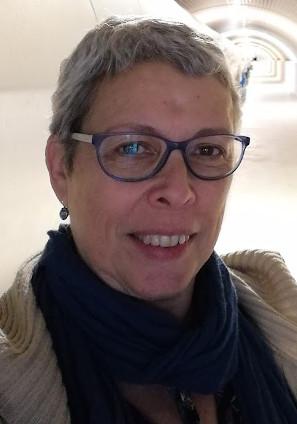
Rosa Doran (NUCLIO - Núcleo Interativo de Astronomia e Inovação em Educação)
For more information about this talk click here
-
Window to the Stars: Using a graphical user interface to the TWIN stellar evolution code for student
Wednesday Nov. 29, 2023
UTC: 9:15 a.m. - 9:25 a.m.Thursday Nov. 30, 2023
UTC: 8:45 p.m. - 8:55 p.m.. Window To The Stars (WTTS) provides a graphical user interface (GUI) to the TWIN stellar evolution code originally written for professional astrophysicists by Peter Eggleton. As Robert Izzard and Evert Gleebeck stated in their 2006 paper: “[WTTS] removes the drudgery associated with the traditional approach to running the code, while maintaining the power, output quality and flexibility a modern stellar evolutionist requires.” In fact the GUI is user friendly enough for school children to use it: so that is what is being done. Over the past few years I have been working with Robert Izzard, the GUI’s author, to establish a programme for school children that can extend and enrich their learning. This presentation discusses the application of WTTS to student led stellar modelling projects.

Andy Brittain BSc(Hons), PGCE, MRi, MInstP (Lady Eleanor Holles School)
For more information about this talk click here
-
LaSciL - Cutting-Edge Online Tools in Astronomy and Planetary Science for a (post) Pandemic World
Wednesday Nov. 29, 2023
UTC: 9:25 a.m. - 9:40 a.m.Thursday Nov. 30, 2023
UTC: 8:55 p.m. - 9:10 p.m.I will present results, conclusions and evaluation from the recently completed (June 2023) Erasmus + program, LaSCiL (lascil.eu; Large Scientific Infrastructures enriching online and digital Learning). LaSciL comprised 5 institutions from 4 countries to develop and support high quality science teaching during and after the pandemic. The partners created 29 PDF guides as cutting edge educational tools which have a significant online and/or digital component. 20 educational scenarios (‘demonstrators’) were developed in astronomy and planetary science. These are lesson plans which teachers can then copy or adapt to their own needs. Teachers also took part in 2 week-long ‘summer schools’ in which they created their own scenarios (a further 48) which they implemented in their classrooms.
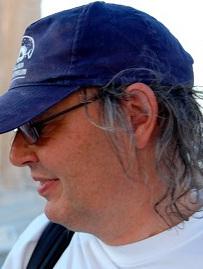
Fraser Lewis (Dill Faulkes Educational Trust (DFET))
Coauthors: Sarah Roberts (Dill Faulkes Educational Trust), Anita Heward (Dill Faulkes Educational Trust), Maria Panagopoulou (Ellinogermaniki Agogi), Panagiotis Evangelopoulos (FORTH,), Gustavo Rojas (NUCLIO), Alvaro Folhas (NUCLIO), Seda Ozdemir-Fritz (OeWF)
For more information about this talk click here
-
Virtual reality in astronomy education: reflecting on design principles
Wednesday Nov. 29, 2023
UTC: 9:40 a.m. - 9:50 a.m.Thursday Nov. 30, 2023
UTC: 9:10 p.m. - 9:20 p.m.Virtual reality (VR) offers transformative possibilities for astronomy education, enhancing visual representation, engagement & hands-on experiences in formal and informal settings. While many studies focus on the learner's view, this study emphasizes the often-neglected perspective of education & public outreach (EPO) professionals. Through focus group interviews & reflective dialogues with EPO experts and scientists from the Australian Research Council Centre of Excellence for Gravitational Wave Discovery, we identify design principles for integrating VR into astronomy education. These principles address immersion, visualization, facilitation & collaboration, offering guidance for astronomy educators and deepening our understanding of the new VR learning contexts in astronomy.

Magdalena Kersting (Department of Science Education, University of Copenhagen)
Coauthors: Jacqueline Bondell (Swinburne University/ARC Centre of Excellence for Gravitational Wave Discovery)
For more information about this talk click here
-
Massive Open Online Classes Bring Astronomy to the World
Wednesday Nov. 29, 2023
UTC: 9:50 a.m. - 10 a.m.Thursday Nov. 30, 2023
UTC: 9:20 p.m. - 9:30 p.m.Massive open online classes, or MOOCs, are intended for adult, lifelong learners worldwide. The author has created four astronomy MOOCs that have reached nearly 400,000 people in 180 countries. The core of a MOOC is a set of video lectures, and other pedagogy that is effective in a MOOC includes citizen science projects, peer writing assignments, live Q&A sessions, and the use of social media and discussion boards. Completion rates of MOOCs can be low, since free-choice learners often have jobs, families, and busy lives. However, when the learners complete surveys, do writing assignments, work on a project, or participate in discussion forums, the completion rate increases dramatically. MOOCs can reach audiences in developing countries that other modes of communication might not.
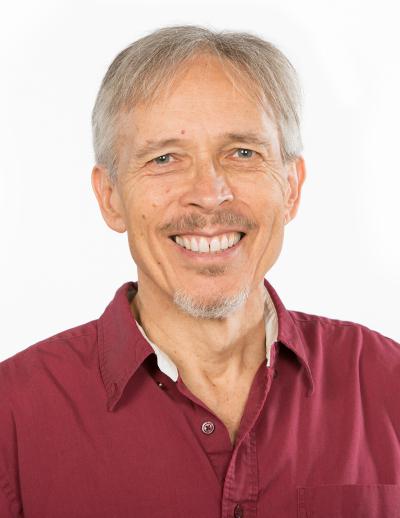
Chris Impey (University of Arizona)
Coauthors: Matthew Wenger (University of Arizona)
For more information about this talk click here
-
Discussion Panel: Teaching Methods
Wednesday Nov. 29, 2023UTC: 10 a.m. - 10:30 a.m.
Thursday Nov. 30, 2023
UTC: 9:30 p.m. - 10 p.m.Chair:
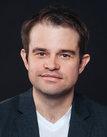
Niall Deacon
Panel: Rosa Doran
(NUCLIO), Andy Brittain BSc(Hons), PGCE, MRi, MInstP
(Lady Eleanor Holles School), Fraser Lewis
(Faulkes Telescope Project and National Schools' Observatory), Magdalena Kersting
(Department of Science Education, University of Copenhagen) -
Pluto is lost!
Thursday Nov. 30, 2023
UTC: 8:05 a.m. - 8:15 a.m.Thursday Nov. 30, 2023
UTC: 6:35 p.m. - 6:45 p.m.It may be unusual to combine arts and drama, with science and its difficult terminologies hard to transmit to the recipient in traditional teaching methods. However, the present paper describes our experience of science theatre addressed to the children of 3rd Junior Highschool of Glyfada in Athens, Greece, with the main purpose of making them acquainted with the Solar System, a topic largely underestimated in compulsory school curricula in Greece. A not less important task was to open our traditional classrooms, develop cooperative skills, achieve a common goal and empower an intensive interest to what happens not only inside but also outside the classroom, where young people have to deal with societal problems but also create new ideas promoting research and innovation.

Ekaterini Maria Rozi (3rd Junior Highschool of Glyfada)
For more information about this talk click here
-
Interdisciplinary approach for teaching school level astronomy.
Thursday Nov. 30, 2023
UTC: 8:15 a.m. - 8:25 a.m.Thursday Nov. 30, 2023
UTC: 6:45 p.m. - 6:55 p.m.This study uses a pedagogical framework that eliminates the subject boundaries and introduces a cohesive interdisciplinary teaching approach to teach subjects like Astronomy which are inherently interdisciplinary. Focusing on the topic of seasons, which involves aspects of geometry, science, geography, arts etc., this work demonstrates the benefits of cross-subject integration. It delves into the process of finding the apt school level topic for study, making concept maps about the topic and using it for designing this interdisciplinary lesson plan, for synchronized implementation by teachers. It will also address the pros and potential challenges during the implementation.
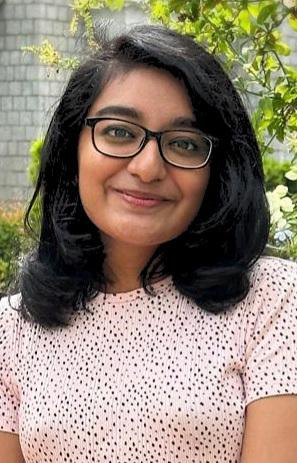
Loraien Raju Kalathil (International School of Photonics, Cochin University of Science and Technology)
Coauthors: Asmita Redij (Homi Bhabha Centre for Science Education)
For more information about this talk click here
-
Connect with Stars : A novel attempt to teach constellations to kids
Thursday Nov. 30, 2023
UTC: 8:25 a.m. - 8:35 a.m.Thursday Nov. 30, 2023
UTC: 6:55 p.m. - 7:05 p.m.In most of the current materials, Constellations are depicted only through the brightest stars drawn, with no background stars made visible. Although there are materials that provide proper picture of the constellations in a starry background, the constellations in these materials are shown upright with no information regarding their orientation, which changes with time. Spotting a constellation requires practice and knowledge of parameters like visibility, orientation and also its position in the sky during various months. At Poornaprajna Amateur Astronomers’ Club, we have put together all of this information visually making it easy for Middle school and high school students to learn about, individual constellations, making use of IAU-Sky&Telescope’s Constellation Maps.

Atul Bhat (Poornaprajna College, Mangalore University)
Coauthors: Chyawan Hegade, Shubhashri Shenoy
For more information about this talk click here
-
STEM+A@Astronomy: Integrate Art in Astronomy Education through Low-Cost STEAM Activities
Thursday Nov. 30, 2023
UTC: 8:35 a.m. - 8:45 a.m.Thursday Nov. 30, 2023
UTC: 7:05 p.m. - 7:15 p.m.Teaching astronomy, which is an interdisciplinary natural science, has become a new future in formal education in schools and public science communication. However, regarding the large target audience size, it might lead to a concern about how to minimize operational costs and expenditures. The talk will introduce an interdisciplinary project called STEM+A@Astronomy. It aims to cultivate learners’ curiosity and hands-on skills through low-cost STEAM activities. It could link up to different aspects in science lessons for students and interactive activities for the public, including space science, astronomical observation, dark sky protection, and planetary science about our solar system.
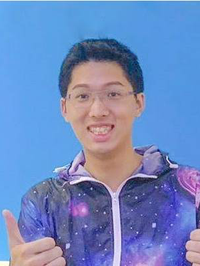
Exodus Chun-Long Sit (Starrix)
For more information about this talk click here
-
Astronomy Education by pursuing Specific Projects for students in Planetarium setup
Thursday Nov. 30, 2023
UTC: 8:45 a.m. - 8:55 a.m.Thursday Nov. 30, 2023
UTC: 7:15 p.m. - 7:25 p.m.By undertaking one’s own research project, students are expected to extend their exposure to topics covered in their curriculum. They should realize the importance of data collection through various experiment setups, data analysis, visualization and representation methods adopted in their fields of study. RSCP, Calicut, over the years, have designed and developed experimental setups that the college students can avail, take data, analyze them and come to concrete conclusions so as to train themselves in experimental methods of astronomy. In this presentation we try to establish how these cheap yet rigorous experimental techniques fulfil the basic objective of astronomy teaching in the colleges.

Jayant Ganguly (Regional Science Centre and Planetarium Calicut)
For more information about this talk click here
-
Inspiring Astronomy Education: Fostering STEM Interest through Meteor Studies
Thursday Nov. 30, 2023
UTC: 8:55 a.m. - 9:05 a.m.Thursday Nov. 30, 2023
UTC: 7:25 p.m. - 7:35 p.m.MOMSTER (MObile Meteor STation for Education & Outreach, https://momster.aeronomie.be/) crafted a Meteor Education Kit for secondary school STEAM teachers. This kit features a mobile radio meteor station with antenna and receiver, accompanied by an educational package. It explores meteors' impact on Earth and the atmosphere, evoking fascination with their beauty. Goals encompass inspiring STEAM pathways, integrating citizen science (notably Radio Meteor Zoo on Zooniverse), and broad public outreach. The initiative secured a Europlanet grant in 2020.
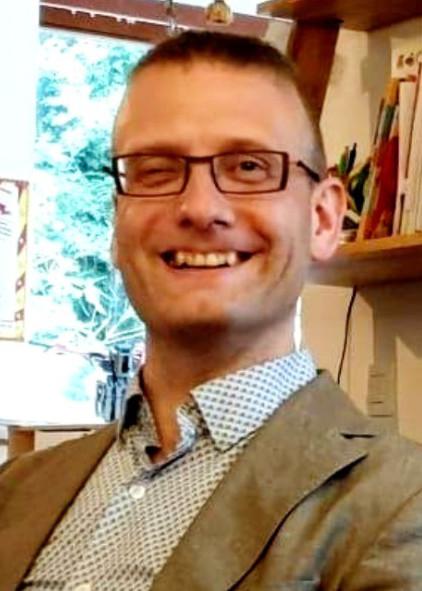
Stijn Calders (Royal Belgian Institute for Space Aeronomy (BIRA-IASB))
Coauthors: Hervé Lamy (Royal Belgian Institute for Space Aeronomy), Mieke Sterken (International Polar Foundation), Karolien Lefever (Royal Belgian Institute for Space Aeronomy), Katrien Kolenberg (KU Leuven, Antwerp University, and VUB), Michel Anciaux (Royal Belgian Institute for Space Aeronomy), Hans Coeckelberghs (Planetarium of the Royal Observatory of Belgium)
For more information about this talk click here
-
Discussion Panel: Teaching Methods
Thursday Nov. 30, 2023UTC: 9:05 a.m. - 9:30 a.m.
Thursday Nov. 30, 2023
UTC: 7:35 p.m. - 8 p.m.Chair:

Niall Deacon
Panel: Atul Bhat , Exodus Chun-Long Sit
(Starrix Hong Kong), Loraien Raju Kalathil
(International School of Photonics, Cochin University of Science and Technology, Cochin 682022, Kerala, India), Ekaterini Maria Rozi , Jayant Ganguly
(Regional Science Centre and Planetarium Calicut), Stijn Calders
(Royal Belgian Institute for Space Aeronomy (BIRA-IASB))
Posters
-
Astronomical observation of the Sun as a didactic resource
Jorge Fonte , Paulo Simeão , Jorge Gameiro , Filipe Pires
We show some low-cost methodologies to show some lesser-known aspects of the Sun's surface. Using equipment that allows the visualization of the projected image of the Sun, optical telescopes with neutral filter, with filter of a single wavelength or the PST students can observe the Sun in different ways and obtain images that allow to make a more in-depth analysis of its dynamics. Getting photographs or videos of the Sun treated with free programs it is possible to analyze, for example, the Sunspots. Through the analysis of these images, young people will be able to make direct measurements to determine the speed of rotation of the Sun at different latitudes and compare the results of these measurements with the data available in the literature.
-
Develope a framework for teaching astronomy using AI art generator platform
Mohammadreza Norouzi
In my recent experience in Iran, I used artificial intelligence art generators for my online astronomy class(K9-12). With this method, children used the ability to convert text into images and draw what they were learning. (This activity , In the common method, it is done with crayons and paper or other artistic methods). apart from speed and quality of results, most importantly, the ability to create a personalized imaginary world that the students gradually completed it with concepts they learnt in each lesson .On the other hand, this tool allowed the teacher to check the quality of education more carefully . In this article, based on the results and analysis of this experience, I have tried to create a theoretical framework for education in today's world.
-
Finding the directions using constellations like Orion, Crux and Big dipper.
Usha Kulkarni (Individual Science Communicator)
Out side class room sometimes in the late winter one can very clearly see the conspicuous constellation Orion for both northern hemisphere and southern hemisphere. This is helpful in knowing the directions. Similarly The Big dipper of northern hemisphere can show us the exact north. Coming to southern hemisphere Crux constellation shows us the directions. keeping a star charts separately of northern and southern hemisphere one can explain about the directions to secondary school children.
-
Listening to the stars
Carlos Morales-Socorro (Asociación Astronómica y Educativa de Canarias "Henrietta Swan Leavitt"), Moisés García-Arencibia (AAEC Henrietta Swan Leavitt), Bolaños-Santana (AAEC Henrietta Swan Leavitt)
During may 2022, the AAEC Henrietta Swan Leavitt run two workshops for visually impaired students from Canary Islands. These six students started their adventure learning the sonification technique by means of tactile diagrams and sonoUno software. After that, in the second workshop, we introduced fundamental astronomy concepts such as star, photon, brightness, constellations, asteroids, variability, light curves, ... They even enjoyed Poetry and Mythology as well; and finally, they explored a picture (tactile) where they could touch and identify a field with a lot o stars they listen to afterwards, identifying an special one: UCAC4 459-092739, the first variable star discovered by visually impaired students in history.
-
Moon observations for age groups 8 -12
Shylaja B S (Jawaharlal Nehru Planetarium, High Grounds, Bengaluru 560001)
We always had the 5-day or 10-day workshops on astronomy starting 2 days after new moon. Therefore observing the phases was easy. However, the same idea was used for noting the moon rise and set timings. Later this idea was extended to all through the year - many interesting ideas came forward for discussion. We would meet once a month for understanding the relative motions of the sun (earth) and moon using these tables of moonrise and set (sunrise and set also).This can be introduced as a special activity in regular curriculum.
-
Teach and learn in an easy and fun way
Turkieh Jbour (Syrian Astronomical Association)
Hologram We designed a pyramid of reinforced plastic 3D cinema, using 3D glasses Making models of the planets, the moon, sun to explain their structure and climate Explanation of how telescopes work using lenses and mirrors to explain the mechanism of the light's process. Made the heavenly constellations from pins and corks using the Braille language for blind Studying the climate on the planets Make gases that simulate the gases presented in the atmosphere of the solar system's planets In addition to designing sounds that simulate how the voice of a singer sounds on each planet many ideas to preserving and protecting the environment, such as recycling waste, reducing the use of plastic
-
Using a disco ball to observing the Sun - and partial solar eclipses
Robert Cumming (Onsala Space Observatory, Chalmers University of Technology), Alex M. Pietrow (Leibniz-Institut für Astrophysik Potsdam)
Disco balls (mirror balls) provide a surprisingly safe and fun way of observing the Sun, in particular during partial solar eclipses. We give an overview of their optics and their potential for use in education and outreach contexts.
-
Using Tolkien's Calendar as a resource in science class.
Javier Vaquero-Martinez (Universidad de Extremadura, Cáceres, Spain)
Tolkien's legendarium has been very popular in the last years, mainly thanks to the Lord of the Rings and The Hobbit films, but recently thanks to the series The Rings of Power. It is well known that Tolkien was very thorough in creating this world, with languages, maps, and even calendars for the different folks in Middle-Earth. In this contribution, we explore the use Tolkien's calendar in science class, comparing it against our calendar. This can be used to further motivate students, increase curiosity about not only how calendars work but also about what rules our current calendar follows, as well as the reasons behind it, which are very much related to Astronomy and Earth Sciences. We show that Tolkien calendar outperforms our calendar slightly, despite other drawbacks.




